At the start of the century, the Philippine Basketball Association (PBA) got mired in a big scandal that threatened to dismember the league. In answer to the threat posed by the entry of the Metropolitan Basketball Association (MBA), foreign players with Filipino blood were being recruited to play in the PBA, making the league far more exciting than it had ever been. Guys like the Seigle siblings – Danny and Andy – plus Asi Taulava and Eric Menk were infusing more excitement with the needed height and heft into the local league.
Things were looking pretty good then, with the level of play in the PBA leaping clear off the scales. People were salivating over the fact that the average height of the national team would go up by as much as 3 inches with the entry of this classy batch of Fil-Ams. And thus, the elusive international recognition – by way of a regional crown perhaps – was once again tantalizingly close at hand. Action in the hardcourt was full of color and highlight moves, to the oohs and ahhs of the basketball fanatics and new converts. Added to this, the hardcourt drama was now far more accessible to the fans in the farthest corners of the country with the power of technology and cable television.
That is, until an investigation would later reveal that many of the supposed Fil-Ams were FAKEs. And that teams had actually condoned the act of hiring these Fil-sham artists in an effort to stay competitive. What a shameful, odious scandal it was. To the dismay and embarrassment of many loyal PBA followers who felt betrayed by their favorite league. The ill-advised cheating caper would erode the confidence of fans, not just on the players, but on the league itself. Suddenly, the PBA’s credibility was in question, and consequently was being clobbered black and blue. This was how the league looked like at the start of the century.
The PBA did try hard to erase the stigma of that mess. To celebrate its 25th Anniversary in 2000, the PBA came up with the “25th Anniversary All-Time Team”, a list of the top 25 Pinoy players to have graced the PBA hardcourt. Included in this exciting list of elite hardcourt magicians were: Johnny “The Flying A” Abarrientos, William “Bogs” Adornado, Ato “The Atom Bomb” Agustin, Francis “Mr Clutch” Arnaiz, Lim Eng Beng, Ricky “The Quick Brown Fox” Brown, Allan “The Triggerman” Caidic, Hector “The Director” Calma, Philip “Tapal King” Cesar, Atoy “The Fortune Cookie” Co, Jerry “The Defense Minister” Codinera, Kenneth “Captain Marbel” Duremdes, Bernie “The Sultan of Swipe” Fabiosa, Mon “El Presidente” Fernandez, Danny “The Daredevil” Florencio, Alberto “Abet” Guidaben, Alfredo “Freddie” Hubalde, Bobby “The Big J” Jaworski, Jojo “Mr Fourth Quarter”” Lastimosa, Samboy “The Skywalker” Lim, Ronnie “The Point Laureate” Magsanoc, Vergel “The Aerial Voyager” Meneses, Manuel “Manny” Paner, Benjie “Tower of Power” Paras, and Alvin “The Captain” Patrimonio. The best of the best, the creme de la creme, these 25 hardcourt heroes were household names that had brought the PBA to starry heights.

But despite the dazzling 25th Anniversary celebrations, the PBA was clearly losing many of its loyal followers. And even with the fold-up of the MBA in 2002, PBA’s attendance didn’t improve significantly as many had expected. Something was definitely amiss. To top it all, with local TV finally able to showcase NBA games on a live or slightly delayed basis, the PBA’s drawing power was seriously challenged. By 2005, only 9 PBA teams were ready to suit up, even lesser than the original 10 when the PBA opened in 1975.
A new breed would eventually take over the reins of the league. With the originals such as Sonny Jaworski, Mon Fernandez, Atoy Co and company gone, and the previous decade’s stars led by Alvin Patrimonio, Allan Caidic, Samboy Lim, Benjie Paras, Johnny Abarrientos, Hec Calma and company also fading out fast, it was time for a new batch of hardcourt super-heroes to step forward. Sadly however, it seemed like no one was ready to match the popularity and charisma of the previous decades’ hardcourt heroes.

Leading the charge of this 3rd generation stars would be the likes of the court generals Willie Miller and Jimmy Alapag, the twin gunslingers of Ginebra – Mark Caguiao and Jayjay Helterbrand, Fil-foreigners Taulava, Menk and Danny Seigle, defenders Danny Ildefonso and Arwind Santos, and shooters James Yap, Dondon Hontiveros and Gary David.

Danny ‘The Demolition Man’ Ildefonso was the decade’s first legitimate star, taking back-to-back league MVP titles in the 2000 and 2001 seasons. In doing so, the San Miguel slotman would become only the third player – after William Adornado and Alvin Patrimonio – to have won the MVP on back-to-back seasons.

The wily Willie Miller, the top draft pick in 2001, would move out from under the shadow of erstwhile top point guard Jimwell Torion of Batang Red Bull with a scintillating MVP performance in 2002. Willie was coming off 2 stellar seasons as the Nueva Ecija Patriots’ franchise player in the rival MBA league before transferring to the PBA. Willie would raise his second MVP trophy in the ’06-07 season, making him only the second 2-time MVP of the decade.

Fil-Tongan man-mountain Asi Taulava would perennially challenge the Demolition Man at the slot, but unlike Danny, who had a steady crew to back him up, Asi was without a steady supporting cast in the Mobiline Phone Pals’ line-up. Asi would only bag the MVP in 2003, when Rookie of the Year Jimmy Alapag joined the Phone Pals to become the team’s stabilizing point guard. As a measure of his durability, Asi ‘The Rock’ Taulava would be named to the PBA All-Star team 13 times. He would eventually strut his stuff – and win the MVP – in the fledgeling Asian Basketball League (ABL) in 2013.

Barangay Ginebra’s Mark ‘The Spark’ Caguiao and Jayjay ‘Helter Skelter’ Helterbrand provided much excitement for the decade. Taking off from the original Batman and Robin partnership of Sonny Jaworski and Francis Arnaiz, this decade’s dynamic duo – also known as “The Fast and the Furious” – would bring their speed-and-spunk culture straight into the hearts of many PBA fans.

A third 2-time MVP would emerge before the end of the decade when Purefoods’ sweet-shooting James Yap, who had earlier clinched his first MVP in season 2005-06, would retake the crown in the 2009-10 season.

Eic Menk would be a resident enforcer on the inside, while Danny Seigle and Gary David would shoot the lights out from afar. Arwind Santos would be a steadying factor both on the offense and defense. Kelly Williams would shine as a rookie, but after capturing the MVP trophy the year after, things would go downhill. Guys like Marc Pingris, Gabe Norwood, LA Tenorio and Jayson Castro would step on the dance floor for the first time.

Meanwhile, the Basketball Association of the Philippines would be briefly suspended by the FIBA in 2005 due to its political in-fighting. As a result, basketball was not included in the South East Asian Games held in Manila in 2005, further dragging down basketball’s popularity in the country.
This would be lifted in 2007 with the formation of the Samahang Basketbol ng Pilipinas (SBP) and a pledge to send more competitive teams in FIBA-sanctioned tournaments. With the formation of the SBP – and the backing of business icon, Manny Pangilinan – the outlook for Philippine Basketball would finally start to look bright.

But the big event that would turn the tide for the PBA would happen outside the squared arena. In September 2009, Typhoon Ondoy devastated Manila and its adjoining provinces. Floods reached a record high and damages were substantial. PBA players were very visible distributing relief goods, providing cheer and hope among the poor victims, many of whom were still temporarily housed in the evacuation centers. For most of the victims, this would be their first time to see these gentle giants in the flesh.

The goodwill the players developed in their relief and rehab forays was just incredible. From unreachable stars, the players were now ‘humanized’, a welcome consequence as a result of the devastation of Ondoy. Players were no longer simply seen in the boob-tube; they were right there in the flesh; sympathizing, caring, listening, reaching out with a helping hand.

Slowly, the PBA’s fan popularity would build up once again. The players’ accessibility, it seems, was the magic formula that would turn the tide for the PBA. After a bleak, stormy start of the decade, things were finally looking sunny and bright.
For Part 1, how it all begun, read: Philippine Basketball In Review Part 1
For Part 2, go to: Philippine Basketball In Review Part 2: The 60s
For Part 3, the pre-PBA days, pls go to: Philippine Basketball In Review Part 3: The MICAA Days
For Part 4 on the turbulent 70s, read: Philippine Basketball In Review Part 4: The Birth of the PBA
For Part 5, as the 2nd generation stars started to assert themselves, pls read: Philippine Basketball In Review Part 5: The 80s Usher in a New Breed
And for Part 6: Philippine Basketball in Review Part 6: Fusing the old With the New

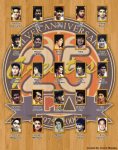

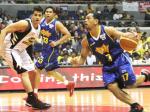

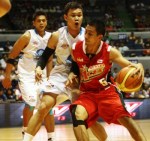

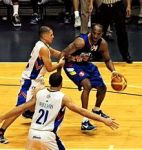



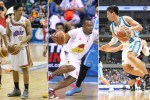



Who is Eric Seigle?
LikeLike
My bad, Redge, it’s Andy Seigle. Thanks for pointing that out.
LikeLike
Impressivereview of basketball in Philippines. Best wishes for New Year. Florida USA – Go Miami Heat !
LikeLike
one of my fave teams in the NBA. Go, Heat!!!
LikeLike